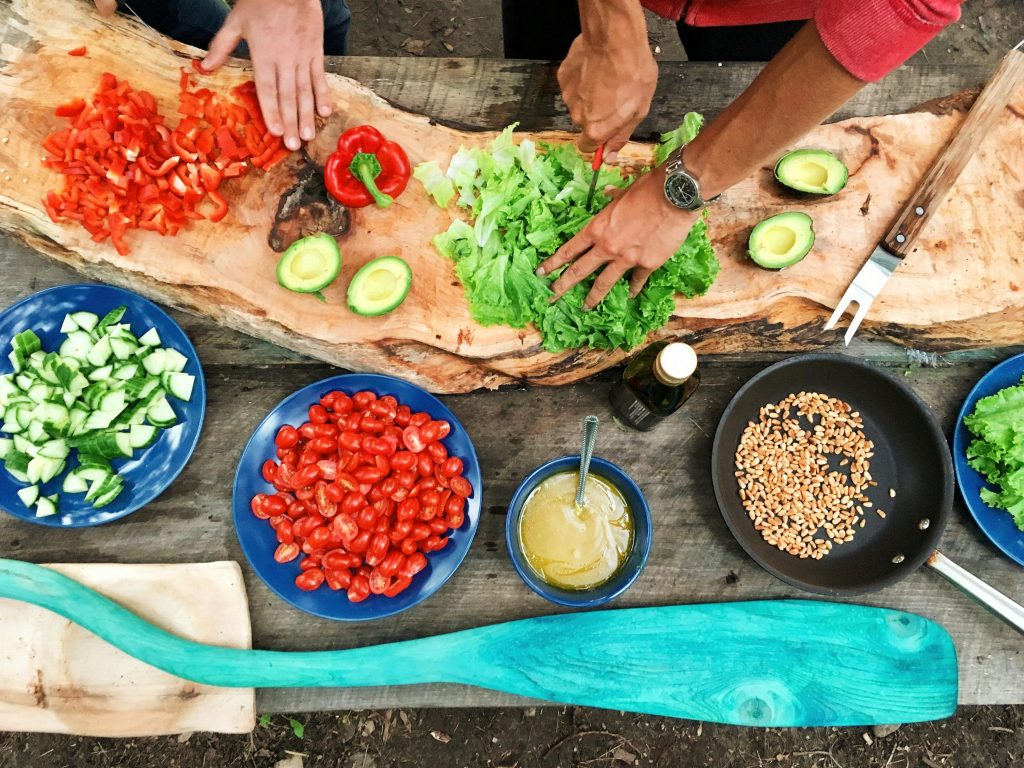
Key Themes: Food as cultural education, global citizenship, biodiversity
Across the world, food is increasingly being used not only to nourish students physically, but also to educate them about culture, ecology, and identity. From Japan’s formal integration of food literacy into education to international programmes that connect cuisine with diplomacy, the idea that food can be a powerful learning tool is gaining recognition.
Food as a Cultural Lens
In 2024, UNESCO called for a renewed global commitment to teaching nutrition and biodiversity in schools, highlighting food systems as a key part of ecological education. This aligns with their broader push for “education for sustainable development”, which encourages understanding the connections between what we eat and the health of our planet. According to UNESCO’s latest Global Education Monitoring (GEM) report, embedding food education into the curriculum fosters environmental awareness, resilience and better health outcomes from an early age.
Japan’s long-standing shokuiku policy offers one of the most structured examples of this. Since 2005, shokuiku—which means “food education”—has been implemented nationwide in Japanese schools, focusing on teaching children where food comes from, how it is produced and processed, and how to make informed, healthy dietary choices. This isn’t limited to textbooks; students often grow vegetables, learn about regional dishes, and eat together in school lunchrooms guided by nutritionists and educators. A recent study published in the Journal of Nutrition Education and Behaviour confirmed that students involved in shokuiku programmes demonstrate stronger nutritional knowledge and greater respect for food than peers without such education.
Other countries are beginning to follow suit. South Korea’s Culinary Diplomacy Initiative, launched by its Ministry of Foreign Affairs, encourages cultural exchange through food, both domestically and abroad. Singapore's heritage food initiatives promote awareness of the island's diverse culinary influences in schools. In the Nordic region, “New Nordic Food” combines sustainability and local ingredients with national identity, providing a model for how food education can align with climate and cultural goals.
The Role of Culinary Diplomacy
Culinary diplomacy—the use of food to foster cross-cultural understanding and cooperation—is not just a diplomatic tool for ambassadors and state banquets. It can be scaled to the classroom as a practical and engaging way to build global citizenship. Food is an accessible and inclusive way to explore topics like migration, trade, colonisation, and community identity. Tasting unfamiliar dishes or preparing recipes from different regions encourages curiosity, empathy, and cultural literacy—key traits in a globally connected world.
In 2025, several secondary schools across Europe trialled “global cuisine weeks”, in which students participated in themed menus and lessons about different food traditions. Evaluation reports showed not only increased interest in geography and history lessons but also better classroom cohesion, particularly in diverse settings where children could share food linked to their heritage.
Sustainability on the Plate
Food education also supports climate literacy. Programmes that highlight seasonality, local sourcing, and food waste can help students understand how their choices affect the environment. Schools that have embraced gardening, composting, or zero-waste lunches have seen not only reductions in food waste but also increases in environmental responsibility among pupils.
The biodiversity crisis—especially the disappearance of traditional crops and animal breeds—is closely linked to food systems. Teaching children about underused grains, wild ingredients, or native plants connects them to lost knowledge and encourages biodiversity-friendly habits.
What Can Schools Do?
While not every school has the resources for a fully integrated food curriculum like Japan’s, small but consistent steps can build similar values:
- Taste journeys: Introduce “world menus” featuring dishes from different cultures, with context provided in geography or history lessons.
- Heritage cooking days: Invite families to share traditional recipes and stories. This builds inclusion and respect for different backgrounds.
- Seasonal eating challenges: Help children learn about what's grown locally and when. This can be tied to climate topics and environmental science.
- Classroom links: Use food as a bridge across subjects—ratios in baking for maths, fermentation for biology, spices for trade history.



